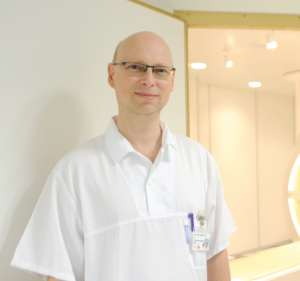Comparison of the accuracy of different measuring methods for myocardial deformation
When it comes to evaluating myocardial deformations (strains), cardiovascular magnetic resonance (CMR) imaging is a widely used tool and offers a number of techniques for this purpose. The method of tagging is considered to be the gold standard for the evaluation of myocardial strain using CMR. But due to its specific requirements (need to scan additional sequences), this technique is used relatively little. On the other hand, CMR feature tracking (FT), a new imaging technique, is more practical and beneficial in clinical settings, but the verification of measurement accuracy is limited. The comparison of different methods of measuring myocardial deformation and comparison of used software is what the research in collaboration with doc. MUDr. Roman Panovský, Ph.D., the head of the Cardiovascular Magnetic Resonance Research Team at International Clinical Research Center of St. Anne’s University Hospital Brno (FNUSA-ICRC), focused on.
The research involved 61 participants, of which 18 were healthy, and 43 had heart conditions such as chronic heart attack, dilated cardiomyopathy, or left ventricular hypertrophy. For all participants, different dimensions of myocardial strains were measured. The measurements included global and regional longitudinal strain (LS), circumferential strain (CS), and radial strain (RS). All measurements were performed using 3 different post-processing software, and the measured values were compared within individual techniques and against tagging.
While the global LS and global CS data among software and tagging were similarly accurate, significant differences were seen for global RS and all strain dimensions on a regional level. “The reliability of global strain measurement for longitudinal and circumferential strains is important information for the introduction of the FT method into routine clinical practice. On the contrary, due to the significant variability of regional strains, it is not possible to recommend this evaluation for the purpose of drawing clinical conclusions,” stated associate professor Panovský.
The full research can be found here.
Supported by the European Regional Development Fund – Project ENOCH (No. CZ.02.1.01/0.0/0.0/16_019/0000868).



